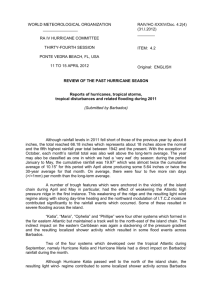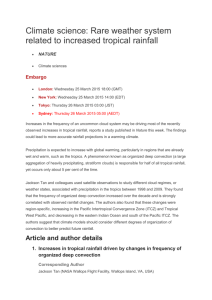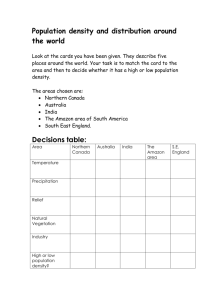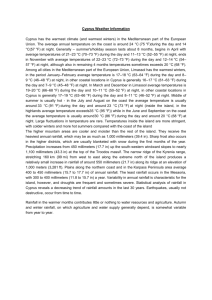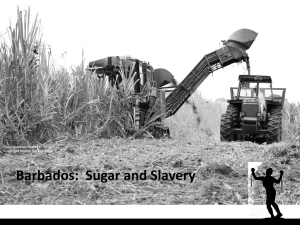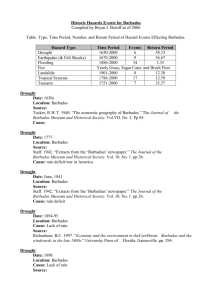Submitted by Barbados
advertisement
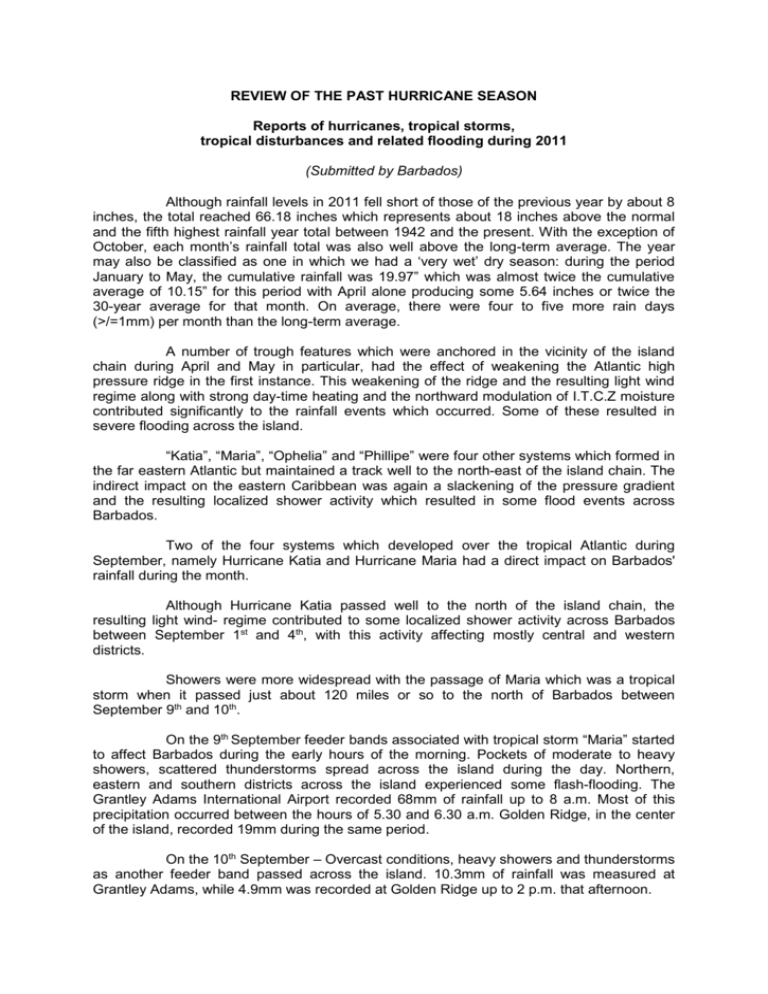
REVIEW OF THE PAST HURRICANE SEASON Reports of hurricanes, tropical storms, tropical disturbances and related flooding during 2011 (Submitted by Barbados) Although rainfall levels in 2011 fell short of those of the previous year by about 8 inches, the total reached 66.18 inches which represents about 18 inches above the normal and the fifth highest rainfall year total between 1942 and the present. With the exception of October, each month’s rainfall total was also well above the long-term average. The year may also be classified as one in which we had a ‘very wet’ dry season: during the period January to May, the cumulative rainfall was 19.97” which was almost twice the cumulative average of 10.15” for this period with April alone producing some 5.64 inches or twice the 30-year average for that month. On average, there were four to five more rain days (>/=1mm) per month than the long-term average. A number of trough features which were anchored in the vicinity of the island chain during April and May in particular, had the effect of weakening the Atlantic high pressure ridge in the first instance. This weakening of the ridge and the resulting light wind regime along with strong day-time heating and the northward modulation of I.T.C.Z moisture contributed significantly to the rainfall events which occurred. Some of these resulted in severe flooding across the island. “Katia”, “Maria”, “Ophelia” and “Phillipe” were four other systems which formed in the far eastern Atlantic but maintained a track well to the north-east of the island chain. The indirect impact on the eastern Caribbean was again a slackening of the pressure gradient and the resulting localized shower activity which resulted in some flood events across Barbados. Two of the four systems which developed over the tropical Atlantic during September, namely Hurricane Katia and Hurricane Maria had a direct impact on Barbados' rainfall during the month. Although Hurricane Katia passed well to the north of the island chain, the resulting light wind- regime contributed to some localized shower activity across Barbados between September 1st and 4th, with this activity affecting mostly central and western districts. Showers were more widespread with the passage of Maria which was a tropical storm when it passed just about 120 miles or so to the north of Barbados between September 9th and 10th. On the 9th September feeder bands associated with tropical storm “Maria” started to affect Barbados during the early hours of the morning. Pockets of moderate to heavy showers, scattered thunderstorms spread across the island during the day. Northern, eastern and southern districts across the island experienced some flash-flooding. The Grantley Adams International Airport recorded 68mm of rainfall up to 8 a.m. Most of this precipitation occurred between the hours of 5.30 and 6.30 a.m. Golden Ridge, in the center of the island, recorded 19mm during the same period. On the 10th September – Overcast conditions, heavy showers and thunderstorms as another feeder band passed across the island. 10.3mm of rainfall was measured at Grantley Adams, while 4.9mm was recorded at Golden Ridge up to 2 p.m. that afternoon. By 5 p.m. on the 10th September “Maria” was located near 17.9°N, 62.4°W, 50mls ESE of St. Martin. The system appeared weak and disorganized and hence all watches and warning were discontinued for the Lesser Antilles. The Barbados Meteorological office issued a total of ten special weather Bulletins between the 8th and 9th of September on this system. A special weather bulletin was also issued from the meteorological office on the 21st September as Barbados monitored tropical storm ‘Ophelia’. However this storm did not have an impact on Barbados Another significant rain-spell occurred between September 14th and 18th as a trough system induced the northward modulation of the ITCZ across the chain. Rainfall in excess of 80mm was recorded at the three (3) previously mentioned rainfall stations. Intermittent showers continued to affect the island up to the 24th of September, but a dry spell ensued thereafter as a weak low to mid-level ridge pattern dominated conditions over the southern Lesser Antilles. This was in direct contrast to the weather conditions which obtained over the remainder of the island chain due to a feeder band from Hurricane Ophelia inducing a westerly wind-flow and some organized convection over the northern Lesser Antilles. Total rainfall at the GAIA for September was 191.8mm which is slightly above the long term average of 176.8mm but well below the September 2010 total of 303.8mm. Golden Ridge and Lears observed totals of 253.2mm and 264.2mm respectively. ________
